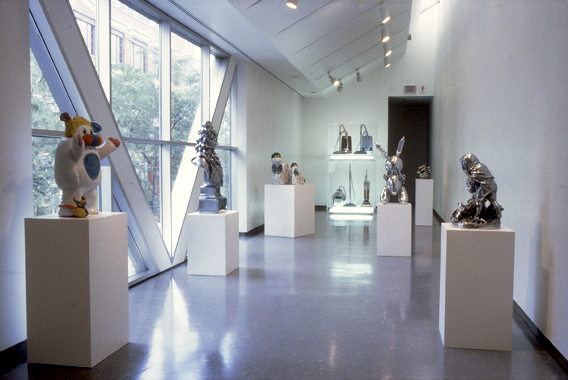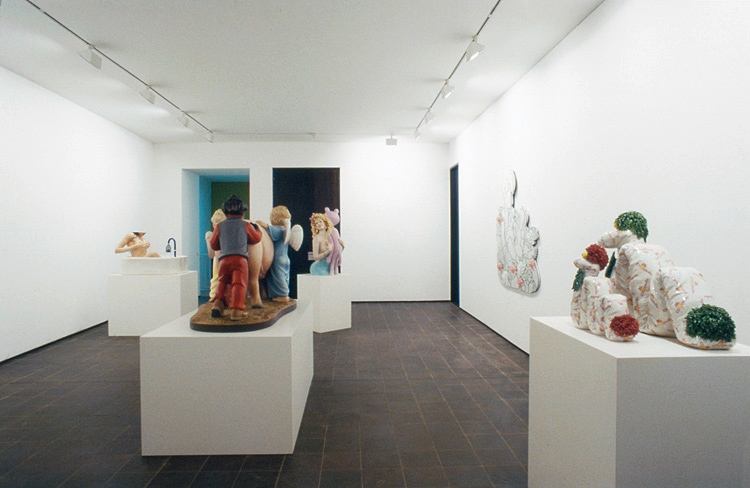
Not everyone is on holiday in Italy this August. Last weekend IP expert Prof. Eleonora Rosati posted about an Italian Supreme Court decision in a dispute over Serpents, a purported 1988 Jeff Koons porcelain sculpture. The objects were purchased at an Italian customs auction in 1991, after their crate had sat unclaimed for two years in Milan. On at least three occasions over the years, Koons refused to acknowledge the work, calling it “counterfeit.” [Can you srsly imagine a Koons counterfeiting ring starting with 3-foot-long, googly-eyed, porcelain HR Puffinstuff snakes?] Then, after thwarting one Christie’s sale, Koons blew up a private deal for the Serpenti [Italian for contested objects which kind of do look like Serpents] in 2014 when he admitted it was his, but it was not a work of art, only a worthless, “imperfect prototype.” A what? So the owner sued.

Like all twenty of his Banality works, produced in polychromed wood or massively scaled porcelain by master craftsmen in Germany and Italy, Serpents is an edition of three, plus an AP. The Italian lawsuit says Serpenti came from Galerie Max Hetzler in Cologne. Koons lawyers tried to argue that the “published” clock only starts for a sculpture when it’s sold, not when it’s merely exhibited. As if any artwork had ever had a more bombastic, spectacular, and artist-promoting unveiling. Serpents was included in Koons’ outrage-inducing triple show, which opened simultaneously at Sonnabend (NY), Donald Young (Chicago), and Max Hetzler (Cologne) in the Fall of 1988, and which was promoted by art magazine ads featuring Koons himself.

But wait, that’s not all. Serpents was also included in Koons’ first museum show, at the MCA Chicago, in July-August 1988. Though they seemed done enough to be mentioned in Artforum’s 1988 review, MCA Chicago curator Francesco Bonami later recalled the Banality porcelains had been unfinished in time for the show. And yet, there they were. A NY Times feature on commercial ambition of the Banality shows mentions 18 for sale, not 20, noting that “(two works will be remade, and they have not yet been priced).”
When the AP came up for sale at Christie’s in 2019—the “imperfect prototype” lawsuit still open in Italy—Serpents‘ Chicago appearance was finessed as a “work in progress.” Because that’s how Koons rolls, I guess, not sweating the finish and detail, just showing whatever. Or is that exactly how Koons rolls, deciding works need to be remade before letting them out the door?

What does Serpenti actually look like that makes it a “defective” and “imperfect prototype”? I think we have images of three of four [or five?] Serpents. The top image is the AP, from Christie’s. The Serpents on Koons’ site is, I believe, ed. 1/3, which belongs to the Rubells. [Or at least they showed it in 2007.] Is the Serpents with the mauve background from Corriere the Italian Serpenti?
One claim has not made it into English language coverage of the suit. In March 2022, after a lower court appeal, the owner told Corriere della Serra that his Serpenti wa marked as ed. 2/3, and that the reason Koons was refusing to authenticate it was because he had made and sold another ed. 2/3 of Serpents. This seems relevant, but indeterminate.
After years of Koons denials followed by a damning embrace, Serpenti‘s owner could reasonably think Koons is trying to hide some editioning shenanigans. But if Koons was double- or triple-dipping on editioning with three major galleries at once, while drawing as much attention to himself as possible, the Banality market would have imploded by now, and Koons haters would never let us hear the end of it. But if Koons thought one unsold Serpents ed. 2/3 was lost or destroyed, he could also decide to declare it so, and refabricate it.
So maybe Serpenti is a survivor, one of the Banality works shown in 1988 that Koons decided were unsuitable for selling, and that needed to be remade. Were there other “prototypes”—can you have “exhibition copies” of a work that’s not finished yet?—that were destroyed? Was Serpenti sent back to the shop, and the maestri della porcellana were like, “Oy, stronzo, don’t rub it in, we’ll make them again.” Serpenti may indeed be an intriguing artifact from Koons’s career, but there is also a plausible historic explanation within the Koonsiverse for why it’s not an actual work. If I can see this in a day, surely Serpenti‘s owners could have figured this out in 10-30 years. Or maybe the tempting allure of the Serpenti is irresistible, even in imperfect form.
